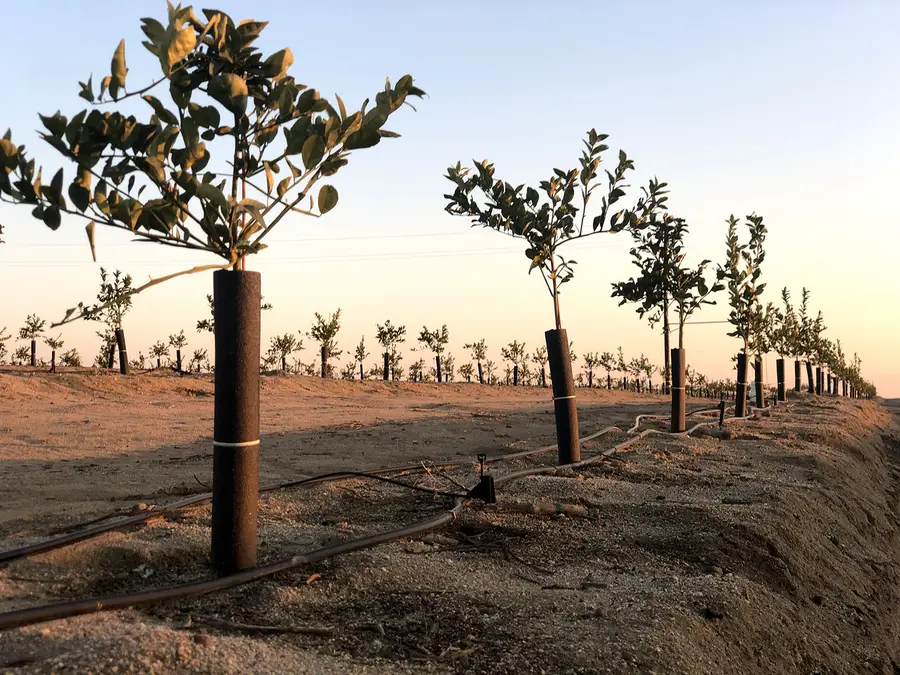
Water managers should prepare to address new challenges and shifting demands for water across energy and food supply chains during this pandemic. Photo by Jennifer Hoponick Redmon
In the first half of 2020, we are experiencing global health and socioeconomic disruption unlike anything observed in the past century. The COVID-19 pandemic has led state and local governments to issue and modify stay-at-home orders and guidance that leaves millions of Americans without work. The global health community is working tirelessly to understand and predict viral spread, understand the risk factors for disease severity, educate the public, and evaluate how effective coronavirus policies across countries are in controlling the spread. As we begin to understand the short and long-term residual implications of the disease itself, unprecedented pressure on supply chains and unique resource management challenges are also coming to light. Moving forward, evaluation of the potential trade-offs of health and economic policy measures requires concerted interdisciplinary research efforts.
The COVID-19 pandemic provides an opportunity to explore the interconnections between food, energy, and water systems in real time. The FEW nexus is a research paradigm that recognizes interdependencies between food production, energy generation, and water supply: water and energy are needed to grow and transport food; cultivated biomass, waste, and water are used to produce energy; and energy is needed to process and store clean water and safe foods. First presented at the Rio+20 Summit in 2012, the FEW nexus is now broadly accepted as an interdisciplinary framework for addressing resource and environmental health challenges. Most nexus research has focused on long-term challenges, for example infrastructure development or climate change adaptation. Typically, large integrated assessment models or life-cycle analysis techniques are used to evaluate specific technologies like biofuels. These approaches must be improved to address long-term global supply and demand challenges for natural resources because of the COVID-19 pandemic. Below, we overview key changes in resource usage, food supply, and water quality concerns in the U.S. and California over the first few months of the pandemic.
Impact of COVID-19 on Food Supply, Insecurity, and Demand
Food supply systems are disrupted with market shortages of key agricultural commodities due to changing consumption patterns. New concerns of supply shortages are emerging as food processing plants close due to local outbreaks. Furthermore, Market factors and labor shortages could stress the global food supply system and increase hunger among vulnerable populations.
With many restaurants closed for in-person service, people are preparing more meals at home, which generally increased grocery purchases. According to the National Retail Federation (NRF), sales at grocery stores in March were up 25.6 percent from February (month-over-month, seasonally adjusted) and up 25.7 percent from last year (March 2019; unadjusted year-over-year). Initial fears of impending economic fallout and shortages resulted in increased food purchases of staples like rice, pasta, and canned food, as well as some non-food items like toilet paper and cleaning supplies. After initial supply shock and empty shelves, grocery stores are recovering, and reserves of non-perishable foods are beginning to refill store shelves. Suppliers are still adjusting to new shopping patterns though, particularly front-loaded purchasing, where people shift away from frequent trips to the grocery store for a few items to less frequent trips to stock up on many items. This type of shopping puts a larger burden on stores and suppliers to keep up with the heavy loads while also avoiding the supply chain pitfall known as the “bull whip effect,” where changes in demand behavior are magnified through the supply chain system and overproduction or scarcity ensues.
While groceries witness unprecedented increases in purchases, food supply chains are also adjusting to the closure of many restaurants, schools, and retail establishments. The U.S. Census Bureau reports heavy losses in recent retail sales.

Percentage change in U.S. retail consumption from February 2020 to March 2020.
Decreased demand in retail, commercial, and governmental settings created a supply surplus of certain foods as supply chains take time to adapt to new consumer preferences. There are reports of farmers dumping unused milk and eggs and plowing underused vegetables. In addition, the uncertainty of when increased demand for produce will shift from households back to other distribution channels poses a significant risk to farmers, who must plant new crops now under market uncertainty to meet future demands. This uncertainty is leading to increase demand for community supported agriculture that directly provides produce to consumers with less handling.
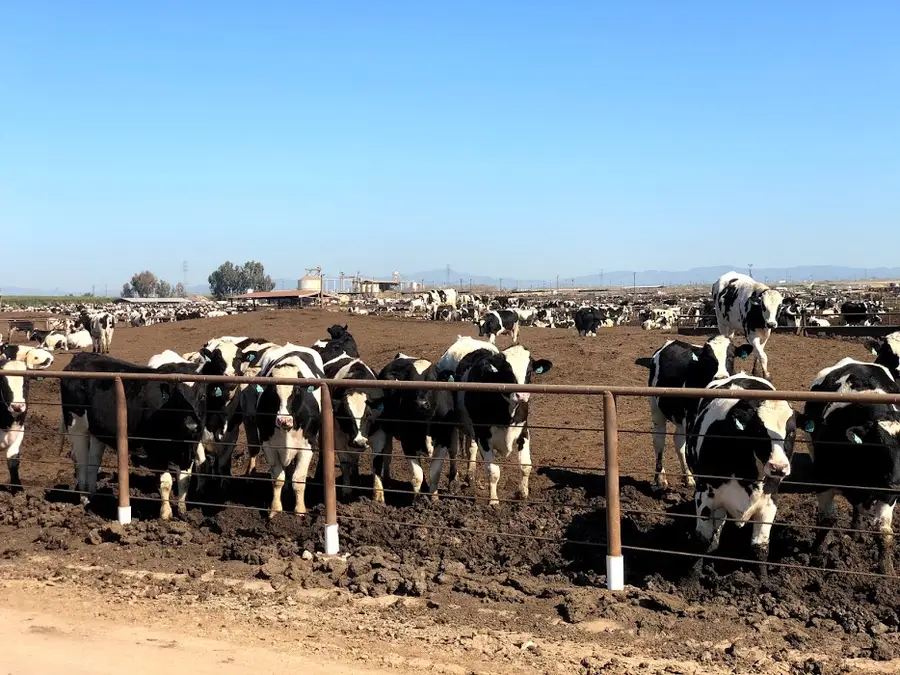
For consumers, the prospect of potential food shortages continues, along with concern about contracting coronavirus from food packaging or the food itself. Photo by Jennifer Hoponick Redmon
With school closures, child food insecurity is a bigger problem than ever: many children depend on free- or reduced-price (FRP) meals served at school under federal child nutrition programs for a significant portion of their nutrition. In 2018, schools served 30 million FRP lunches and 15 million FRP breakfasts a day. Now, school districts are implementing various stop-gap measures to continue to provide those students with food at home. California has granted state funding to local education agencies to fund implementation of its Summer Food Service Program (SFSP) to provide meals for kids. The federal government has also passed the COVID-19 Child Nutrition Response Act to continue funding for food assistance and nutrition programs.
Food safety is a concern among households, with varying messaging related to the risks of take-out food, and whether groceries should be cleaned or sanitized before use. Food industry workers are also at greater risk of contracting COVID-19, with meat processing plants most notably reporting widespread outbreaks triggered by a confluence of risk factors, including close indoor quarters with cooler conditions that make the virus stable for longer, along with minimal to no sick leave policies. Food supply and food service workers are facing health and economic disparities that are difficult to reconcile. Guidance for food workers on what workers should do is being questioned by the very low-wage workers who feel compelled to choose supporting their family over their own health. For consumers, potential meat shortages may last months and consumers continue to show concern about whether they could contract coronavirus from meat packaging or grocery foods in general.
Impact of COVID-19 on Energy Consumption
Market shocks caused the benchmark price of crude oil to dip into negative territory, adding pressure and labor furloughs to an industry that is already vulnerable to boom and bust cycles. Decreased energy consumption for activities like transportation is widespread as the majority of U.S. households live in areas with stay at home orders. Recent forecasts from the Energy Information Administration suggest that 2020 motor gasoline and jet fuels could fall 11% and 25% respectively relative to 2019 levels due to second quarter stay-at-home measures. Total electricity consumption also fell recently due to business closings, and it is expected that this overall decline will continue through 2020. In California, average daily energy consumption on weekdays dropped dramatically after the announcement of the statewide stay-at-home order on March 19, 2020 due to business closings, though additional consumption (and energy costs) are shifting to households.
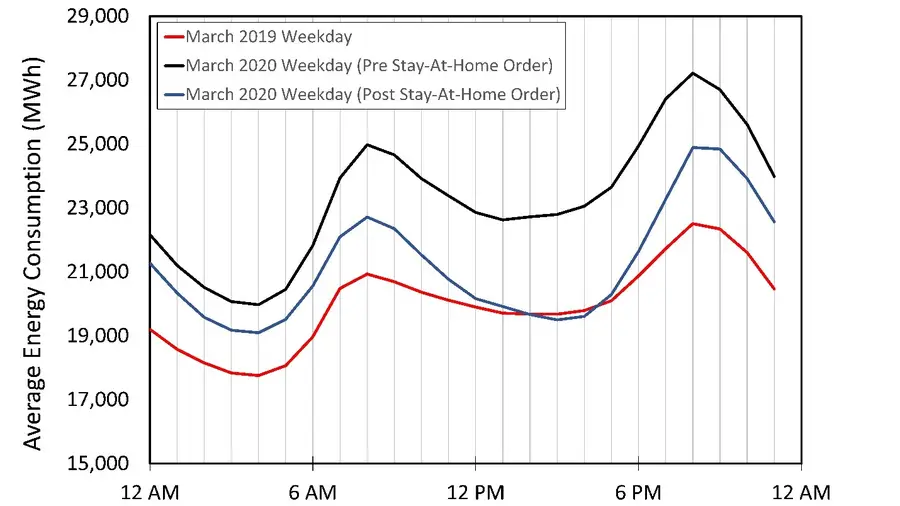
Average weekday energy consumption in California for March 2019 (red line), March 2020 before the stay-at-home order (black line), and March 2020 after the stay-at-home order issued on March 19, 2020 (blue line). Lines show average hourly consumption for each hour of the weekday (Monday-Friday) for the specified time period (and are not adjusted to account for variability in temperature from 2019 to 2020).
In April, the trend continued as average weekday daily consumption dropped below 2019 levels. On average, April 2020 saw a reduction of 38,000 MWh per day compared to April 2019. Assuming an average American household uses 0.03 MWh per day, this daily 38,000 MWh electricity reduction is the equivalent of the daily power used for approximately 1.3 million houses.
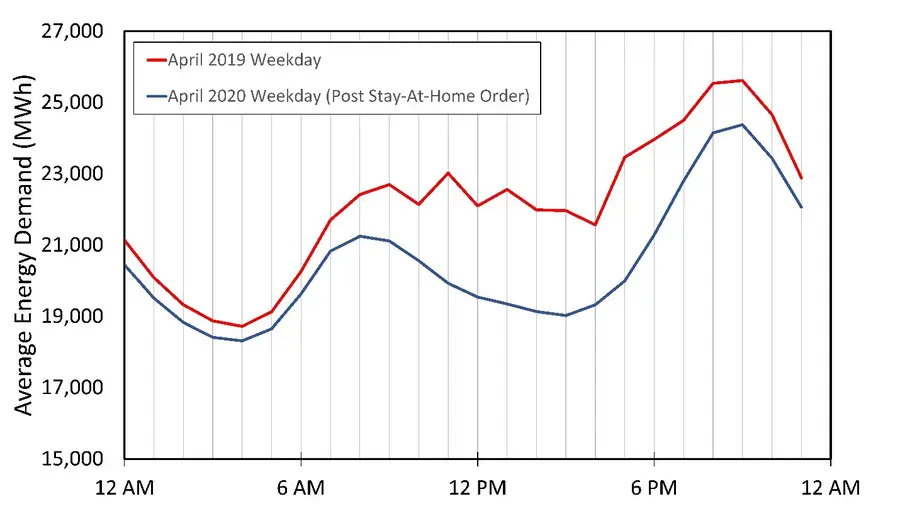
Similar drops in electricity consumption are evident in other countries as well, including Italy, which reduced electricity consumption 20% after stay-at-home orders were issued. However, the distribution of where, when, and why electricity is consumed has also been impacted by the pandemic. The stay-at-home orders issued by most states led to thousands of business closures, and as a result, approximately 60% of Americans shifted to working from home (at least temporarily), while millions more are unemployed or furloughed. This shift increases the demand for residential electricity for cooking, entertainment, and laptops and other work/education technology. Thus, while overall electricity consumption could continue to decline, energy consumption is likely to shift towards the residential sector, and if prolonged, this shift could pressure grids locally during the summer months as households keep air conditioners and appliances operating throughout the day.
Renewable energy expansion efforts are also impacted with heightened uncertainty. While interest in self-sufficiency is boosting the demand for home solar installations, larger market risks deals a potential blow to the industry.
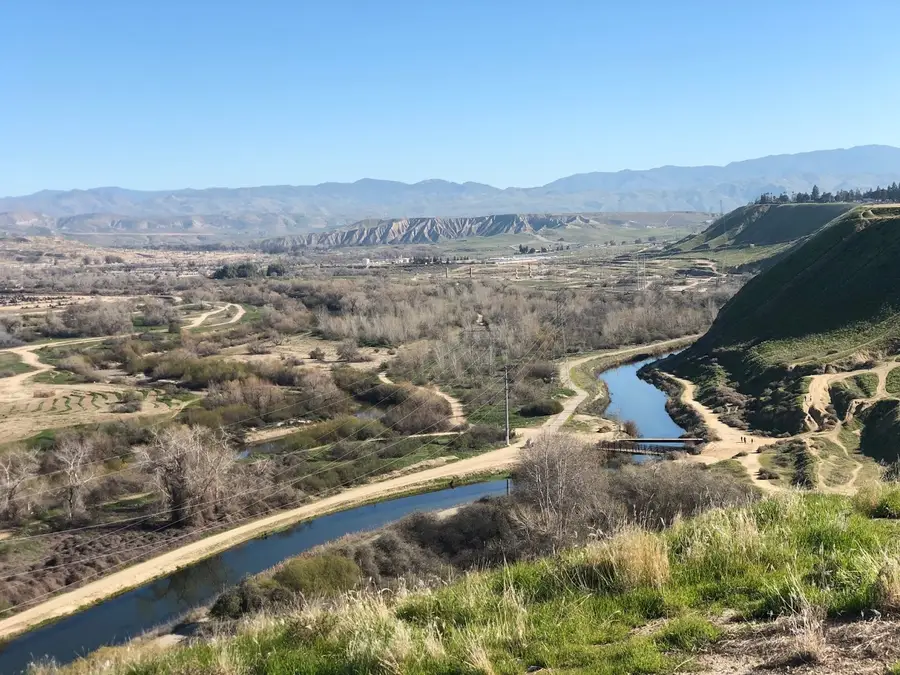
While reduced water consumption during coronavirus helps stressed water supplies recover, water quality within unused buildings is likely to contain elevated levels of lead if piping systems are not flushed sufficient prior to resumed building occupancy. Photo by Jennifer Hoponick Redmon
COVID-19 Impact on Water Consumption and Quality
Water consumption patterns are also affected by stay-at-home orders, shifting patterns of consumption, distribution, and waste flows from the commercial sector to households, though the net impacts of the pandemic on U.S. water supply and quality are unclear at this time. Currently, it appears reduced economic activity is relaxing pressure on overstretched water supplies. With lower electricity consumption, power-plant water withdrawals for thermoelectric generation are lower, putting less strain on water resources during the global pandemic. Trends in the consumption of water have mirrored the drop in electricity consumption as many states have closed businesses that are heavy water consumers such as breweries and some manufacturing plants. In Beverly Hills, California, for example, water consumption prior to the March 19 stay at home order averaged 1.6 million gallons per day higher than 2019 consumption (Figure 4). After the order, water consumption for the city dropped to an average of 3.2 million gallons per day below 2019 consumption.

Beverly Hills, California daily water consumption averaged over 1 week (Sunday-Saturday) intervals for February-April 2019 (red line), February-March 2020 before the stay-at-home order (black line) and March-April 2020 after the stay-at-home order issued on March 19, 2020 (blue line) (Metropolitan Water District of Southern California, 2020). Data were used from this area of California as the district has real-time water data and historical records, plus supply provides 100% of Beverly Hills' water.
Whether this trend in reduced water consumption continues in the coming months depends on the pace at which local economies begin to re-open, variability in local occupations, as well as policy and market changes to support local industries such as manufacturing and agricultural production. Changes in energy and food demands could pressure water for thermoelectric generation and irrigation purposes this summer as these sectors intensify production to meet local demands. Because water is a fundamental input to agriculture and energy production, systemic changes in food and energy supply could alter the timing and spatial distribution of water consumption. Water managers are faced with new challenges and shifting demands for water across energy and food supply chains during the pandemic.
Water quality across communities, sectors, and individual buildings is another area potentially affected by the pandemic. There are reports of improved water quality in terrestrial systems in Venice and other regions during quarantine periods. However, the net effect of the pandemic on surface water quality is unclear at this time and will be impacted by near-term food supply, energy generation, and industrial processing trends during the recovery. Further, while some environmental quality improvements are being documented during the pandemic, such as improved air quality from reduced manufacturing and car travel, there are emerging concerns regarding degraded water quality in unoccupied buildings (e.g., schools) if piping systems are not sufficiently flushed prior to resumed use. COVID-19 has been found in fecal matter and research on its presence in wastewater shows that it could be a transmission risk, but it may help provide an early warning information system on asymptomatic carriers and total cases for local communities with public water supplies. As water and wastewater supply and distribution systems ramp back up during the economic recovery, new management challenges related to aging infrastructure could be amplified, requiring a nexus lens to identify solutions and adapt to minimize environmental health concerns.
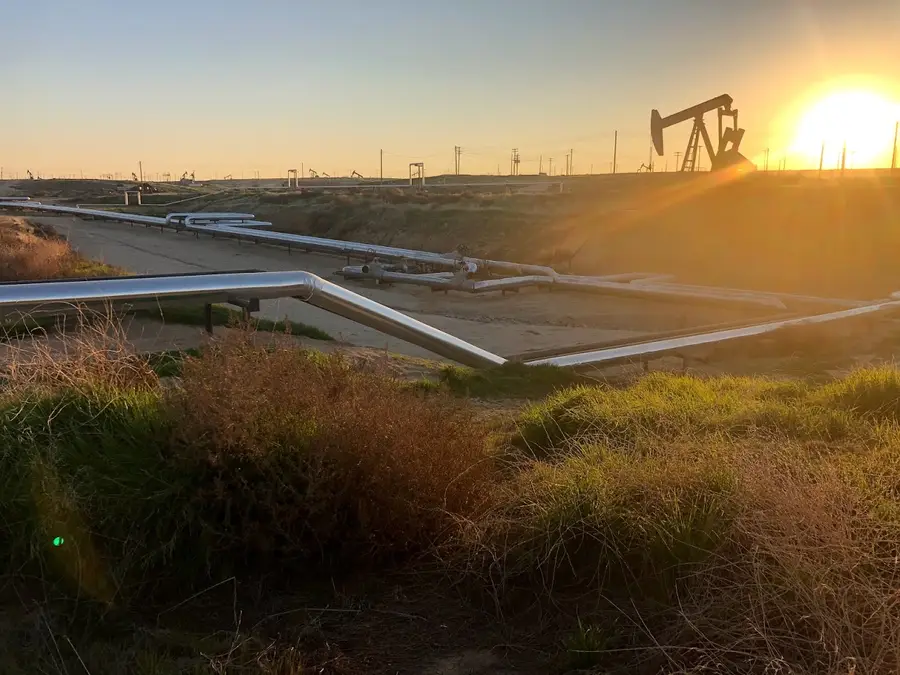
The immense changes to food, energy, and water allocation and use because of COVID-19 present us with an unprecedented opportunity to focus on initiatives that increase the resilience of FEW systems. Photo by Jennifer Hoponick Redmon.
Conclusions: Adapting for Long-Term Resilience
Food, energy, and water systems are facing unique challenges because of the COVID-19 pandemic that defy conventional norms and fall outside of modern precedent. This global public health crisis raises the question: How resilient are our food, energy, and water supply systems in adapting to coronavirus in the near-term and long-term? Unfortunately, existing FEW nexus frameworks may be inadequate to address COVID-19 stressors. Current frameworks often aggregate resources over time and space, thereby missing important nuances in local resource consumption and supply patterns. Other frameworks either do not fully capture interactions across the nexus or are calibrated to historic data with fine statistical precision, and thus may not be well-suited for analysis of never-before-seen circumstances in our modern global economy. Given the inextricable connections between these systems, holistic efforts to monitor and address these challenges are needed.
It is abundantly clear that scientists need to formally plan for and evaluate “what-if” scenarios that go beyond our previous experience and historical precedents with food, energy, and water systems at the local, national, and international level. Near-term adaptations – including new management strategies, policy changes, and technological solutions – are critical to ensure resources are sufficient, allocated equitably based on changing demand, and safe. The COVID-19 pandemic intensifies the need for systems thinking and data-driven approaches to address FEW nexus challenges—both those we think we understand (e.g., drought events) and those that are completely unanticipated. Increasing resilience to near-term systemic shocks will help prepare FEW systems for longer term (and potentially larger) challenges posed by climate change, population growth, and increased resource scarcity.
Once the current pandemic wave begins to subside and the economic recovery begins, continued uncertainty and pandemic resurgence will introduce new stressors on food, energy, and water systems. Some states will recover more rapidly, which could result in a reallocation of economic activity (e.g., manufacturing, food production), increasing the demand for energy and water inputs in these states. Business owners must consider how operations can be adapted to lower transmission risk. Some institutions may continue to implement work from home policies, which will continue to shift the distribution of daily energy consumption toward residential use.
The immense changes to food, energy, and water allocation and use because of COVID-19 present us with an unprecedented opportunity to focus on initiatives that increase the resilience of FEW systems.
The current pandemic is a wakeup call that the way we interact with nature affects the likelihood of another pandemic, and the natural resources we need for our wellbeing are vulnerable to the side effects of a global health crisis. At RTI, we are evaluating the resiliency of food, energy, and water systems, leveraging years of experience in natural resource management and environmental health modeling. If we internalize the lessons learned from the economic recovery decisions underway, especially for communities and small businesses already economically vulnerable prior to the pandemic, we can identify key inefficiencies and pressure points across the FEW nexus and strategically identify synergistic solutions. A holistic perspective is critical to improving resource management (e.g., energy efficiency) through behavioral change, technological innovation, and infrastructure adaptation. A science-based and global approach to economic recovery will guide us toward longer-term sustainability and resilience planning to confront the current pandemic and prepare for future global crises, from another infectious disease pandemic to climate-related disasters.


